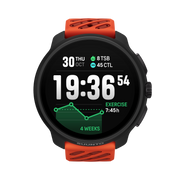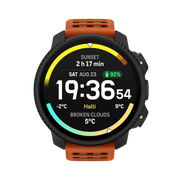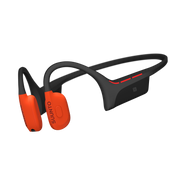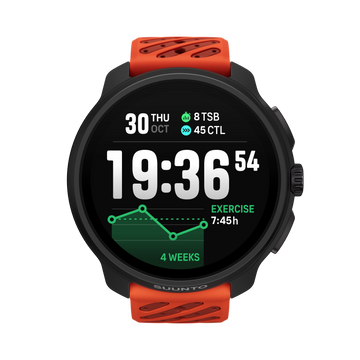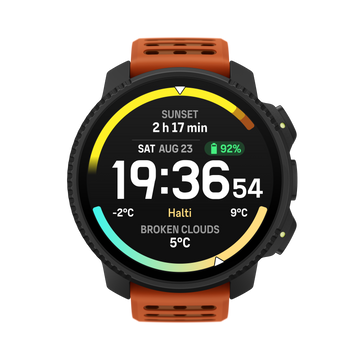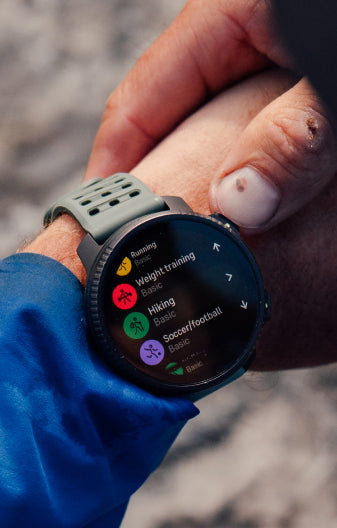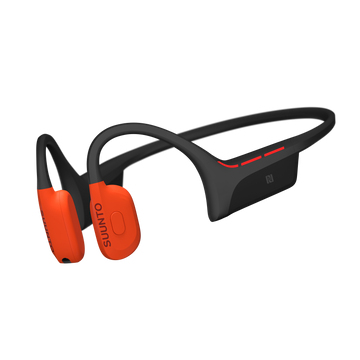

Suunto Blog

Why Ö till Ö swim-run is the must-do adventure race
On the first Monday in September one hundred teams of two will stand on the shores of Sandhamn in the Stockholm archipelago. They will face one of the toughest endurance challenges in the world, the Ö till Ö Swim Run Championship.
Ö till Ö (island to island) is a unique race in which teams of two swim and run 75 km across 26 islands. One of the teams this year is The Baltic Sea Action Group Swim Run Team.
“About 65 km of the total distance is running and 10 km openwater swimming. This means that about a quarter of the race time is spent swimming,” Juha Lindfors, a Baltic Sea Action Group Swim Run Team member says.
Finnish Lindfors and his German teammate Armin Hummel are both experienced swimmers. Both have won multiple national championship titles in swimming. Last year they took part in Ö till Ö for the first time.
“The race last year came as a surprise with only a three weeks’ notice as one of my friends who originally came up with the crazy idea of participating in the race could not make it. There was really no time to get prepared. However, we made it and the event itself was magnificent.”
“One of the most fascinating things in the race is experiencing the nature in the beautiful Stockholm archipelago and in the Baltic Sea. First feeling after the race was that we must come back again – and maybe with some more preparation.”
This year the team has two goals: to break the 10-hour barrier and most importantly to increase awareness about the state of the Baltic Sea.
“Already after the race last year I had the idea that we could also increase general awareness of the work of the Baltic Sea Action Group and get more people and organizations to commit on actions to save the Baltic Sea.
“For me this is very important as I live by the sea, sailing on it, and especially when going for a dip in the sea. I really hope that my children can keep on enjoying the same privileges.”
An important part of the swim run event are the transitions in and out of the water.
“A one minute loss in each transition adds up to a whole hour in the end,” Lindfors says.
To make the challenge even bigger, the competitors have to carry everything they need with them through out the race, which results in some interesting and novel gear solutions – they swim with their running shoes and run in wetsuits. Teams will also use hand paddles and pull buoys.
Swimming in shoes is particularly tricky.
“They slow us down about 5–10 seconds per 100 meters.”
To compensate for the added drag of the shoes, many of the teams use pull buoys to improve buoyancy. But that too comes with a price: you will then have to find a way to carry the buoyancy aid during the run stages.
Also choosing the right shoes can be tricky: they have to be superlight even when wet but also have a good grip for the wet and slippy beach rocks.
“Last year I wore orienteering shoes. This time I have chosen to race in ultralight trailrunning shoes,” Lindfors reveals.
Ö till Ö Swim Run Championships will take place in Sweden on September 1st. More info and live tracking can be found at www.otillo.se
More info about the Baltic Sea Action Group can be found here.
All images © Jakob Edholm/ÖTILLÖ13

Recover like a 'Caveman'
Getting your recovery right is almost as important as the training itself – especially if you have a packed race diary. It’s also particularly true as you get older when the body is less forgiving of strains, bruises and stiffness. So what’s the approach of the pros? Triathlete and XTERRA champion Conrad Stoltz is known as ‘the Caveman’ for his warrior spirit and ability to take hits – just the man in other words to offer some advice. He is famous for being hard on himself and his gear and in his younger days used to sleep on benches and once (willingly) in a police station before races. These days, looking after his body is the number one priority. “I believe in a good warm up and cool down after racing,” he says. “Plus regular massage and self massage on the foam roller.”Gone are the days when Conrad would blast through injuries. These days he listens to his body. “If I have even a small injury, I’ll try to get it resolved as quickly as possible,” he says.He adds that one of the most important things after a hard ride, run or swim is to take on fluids right away. “When I get back from a hard training session I’ll have a drink with carbs and some protein right away to get the recovery process started.”This is in line with the latest advice from sports nutritionists who recommend taking on fuel and fluids during a 30 minute window after exercise, or even within 15 minutes. “Within 30-40 mins I will sit down to a good meal,” says Conrad. “Caveman style – meat, potatoes, vegetables and maybe some chocolate or ice cream.”But some habits die hard. There’s no cross-training for Conrad. “I’d like to say I ride my enduro motorbike for cross training in the off-season,” he adds, “but I race all year round!”

Tutorial Tuesday: Find a GPS signal more quickly
To receive a GPS signal your Suunto watch needs to locate satellites that are orbiting the Earth. The better the watch knows where the satellites are located, the quicker it will receive the signal.
Since the satellites are moving constantly, the new locations of the satellites need to be synced to your watch. Simply put, to find the satellites quicker, sync your watch regularly with Suunto app.
Suunto app sync the latest, seven-day satellite orbit forecast to your watch so it knows where to look. If you want to optimize and find the signal quickly, sync the watch as close to your activity as possible.
The data that is synced to your watch is global. So even if you sync your watch in New York and start your run 12 hours later in Chamonix, there is no need to re-sync.
Image: © Bruno LongGet support for your Suunto product at support

A WETSUIT WILL MAKE YOU FASTER
Wetsuits were invented to keep you warm – but they have another positive side effect: they make you faster, too. The buoyancy provided by the suit keeps you in a better swimming position – especially if the swim is your weak spot – and helps save your legs for battle in the cycling and running stages.
Swimmers with competition experience often worry the wetsuit will hinder their range of motion – but that’s a mistake. Tests with and without wetsuits have shown a time saving of five to ten seconds per hundred meters, with wetsuit. Simply put, a full-sleeve suit will help any swimmer go faster.
Like with any athletic gear, fit is important. A suit that’s too big is uncomfortable, slow and cold. Too small and it restricts movement and circulation, making your muscles work harder than they need to. But remember – it’s easier to choose a suit that is too big than one that is too small. Try before you buy, and, if you can, get a swim in. Some triathlon shops have a pool on site, and some teams have events where various suits can be tested.
High-quality wetsuits made specifically for triathlon or long-distance swimming are optimized for buoyancy, fit and range of motion, with different materials in different parts of the suit. A thinner, high-stretch material in arms, shoulders and underarms improves flexibility, while a thicker material in the torso and legs optimizes the swim position.
Top tip? Place your foot in a plastic bag before putting on; it will slide through easily without the risk of tearing the suit.
When choosing tri-ready rubber, don’t forget the transition (T1) after the swim. A zipper for quick and easy removal can shave valuable seconds (or more, if you’re clumsy) off your time! Many athletes also opt to cut a few cm off at the cuffs and ankles to make them easier to remove.
The last thing to remember about wetsuits for triathlons? You can’t always use them. In warm waters, many races don’t allow them (a definite plus for those who are strong swimmers). In the Ironman races, the temperature limit for wearing a suit is 24.5 degrees Celsius (76.1 degrees Fahrenheit) – but generally, temperature limits for wearing wetsuit differ based on the distance and race. So the biggest tip about suits? Make sure they’re allowed before you cross the start line!
Read also Conrad Stoltz’s open water swimming tips

How to win races when you're over 40
Conrad Stoltz is the proof that you don't have to slow-up as you get older. In fact, the XTERRA athlete and former pro triathlete says he's just as fit as he was 20 years ago – and he's regularly beating guys half his age. What's his secret?
“I think it's part scientific training and part experience,” Conrad tells us. “At age 40 my power on the bike is as good, if not better than ever.”
He says this is partly due to the rigorous training program and partnership he has with his coach, Ian Rodger.
“He comes from a Sport Science background where he has done a lot of research and testing on athletes in the lab,” says Conrad. “He lives in Cape Town so we only see each other a handful of times a year but we spend hours and hours communicating via email, skype and text. All of the coaching gets done over the internet. After training I share my workout, and accompany it with a thorough description of how I felt before during and after the session. Ian analyses the data and fine-tunes my training for the next day. So every day is custom made for me.”
“It's very effective,” he adds. “Thanks to that I haven't had any stints of overtraining, under training, or unnecessary injury or sickness.”
It's all a far cry from when Conrad started out as an athlete. “Back then I wanted to train super hard every day, I wanted to race every weekend, and I wanted to win every race! It's simply impossible – I made every mistake in the book, and learned all the lessons first hand. Also, 26 years of triathlon racing – 22 as a pro – has given me a lot of experience and confidence to draw from.”

Conrad Stoltz's open water swimming tips
Doing you swimming drills in the pool is important, but nothing beats the outdoors, says Stoltz.
It's one of the biggest issues for triathletes and something of interest to anyone who loves open water – how to improve your technique. As everyone knows – and often dreads! – being disciplined about swimming drills is essential to improve your performance. But not everything can be learned in a pool, says Conrad Stoltz.
“Good open water swimming comes from lots of practice,” says the multiple XTERRA champion.
“You have to learn different kinds of open water. Lakes are easy, but ocean swims have waves, currents and sand bars, and river swims are tricky because of currents.”
He says there's no substitute for getting out there into the wild and just getting the feel of different water types.
Of course, when it comes to actual swimming race preparation, he says the trick is to swim as often as possible in a group. You should also ask yourself important tactical questions. “Where to position yourself at the start? How to pace yourself to start fast without blowing up? How to draft, where to postition yourself around the buoys?” he says.
“Building fitness in a pool with a swim squad is good,” he adds, “but I try to spend as much time as possible swimming open water. There is no substitute for open water – plus it's usually more fun than staring at the black line!”
Conrad's top 3 tips:
Swim outside in different conditions – lakes, rivers and the sea.
Swim in a group and practise drafting.
Plan your race tactics.
